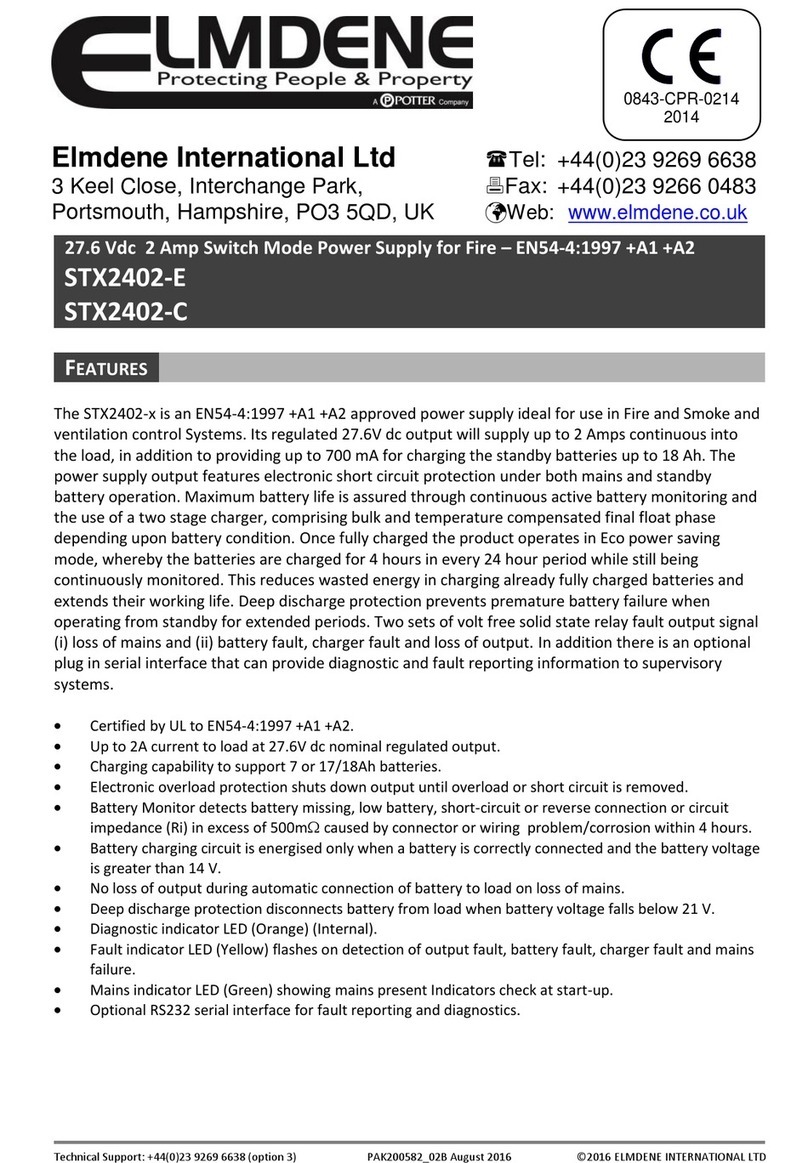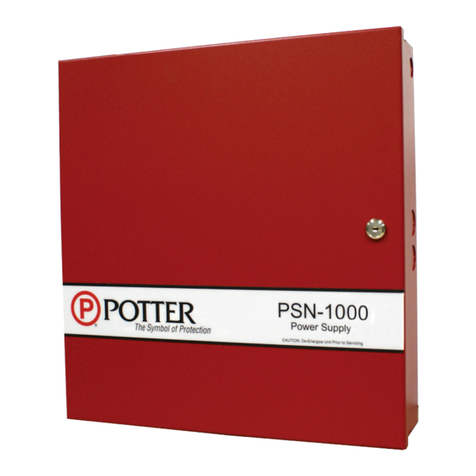
3
PSN-106, PSN-64, PSB-10 • 5403590 • REVA • 12/09
Contents
Section 1: PSN-106.......................................................................................................................................................PSN-106:1
General Description..............................................................................................................................................................PSN-106:3
System Features....................................................................................................................................................................PSN-106:3
Mounting Instructions...........................................................................................................................................................PSN-106:3
Operating Instructions...........................................................................................................................................................PSN-106:3
Alarm Condition.....................................................................................................................................................PSN-106:3
Trouble Condition ..................................................................................................................................................PSN-106:4
Standby Operation..................................................................................................................................................PSN-106:4
Testing and Maintenance........................................................................................................................................PSN-106:5
Battery Maintenance.............................................................................................................................................................PSN-106:5
Electrical Operating Characteristics .....................................................................................................................................PSN-106:5
Notification Power Supply....................................................................................................................................................PSN-106:6
Wiring Options......................................................................................................................................................................PSN-106:7
Class B Trigger and Class B Notification Circuit Trigger .....................................................................................PSN-106:7
Class A Trigger and Class A Notification Circuit...................................................................................................PSN-106:7
Class B - Multiple Supply Trigger..........................................................................................................................PSN-106:8
Class A - Multiple Supply Trigger..........................................................................................................................PSN-106:8
Pass Thru Mode......................................................................................................................................................PSN-106:9
Wire Routing.......................................................................................................................................................................PSN-106:10
Reference EOL....................................................................................................................................................................PSN-106:10
Dip Switch Programming ...................................................................................................................................................PSN-106:11
Input Trigger Type................................................................................................................................................PSN-106:11
Bulk Supply Options ............................................................................................................................................PSN-106:11
Class A/B Selection..............................................................................................................................................PSN-106:12
Door Holder AC Dropout delay ...........................................................................................................................PSN-106:12
DC Output is Door Holder ...................................................................................................................................PSN-106:12
Trouble Memory Enabled.....................................................................................................................................PSN-106:12
Individual NAC Options.....................................................................................................................................................PSN-106:13
Battery Calculation Worksheet ...........................................................................................................................................PSN-106:15
Section 2: PSN-64............................................................................................................................................................PSN-64:1
General Description................................................................................................................................................................PSN-64:3
System Features......................................................................................................................................................................PSN-64:3
Mounting Instructions.............................................................................................................................................................PSN-64:3
Operating Instructions.............................................................................................................................................................PSN-64:3
Alarm Condition.......................................................................................................................................................PSN-64:3
Standby Operation....................................................................................................................................................PSN-64:4
Trouble Condition ....................................................................................................................................................PSN-64:4
Testing and Maintenance..........................................................................................................................................PSN-64:5
Battery Maintenance...............................................................................................................................................................PSN-64:5
Electrical Operating Characteristics .......................................................................................................................................PSN-64:5
Notification Power Supply......................................................................................................................................................PSN-64:6
Wiring Options........................................................................................................................................................................PSN-64:7
Class A Trigger and Class A Notification Circuit.....................................................................................................PSN-64:7
Class B - Multiple Supply Trigger............................................................................................................................PSN-64:8
Class A - Multiple Supply Trigger............................................................................................................................PSN-64:8
Pass Thru Mode........................................................................................................................................................PSN-64:9
Wire Routing.........................................................................................................................................................................PSN-64:10
Reference EOL......................................................................................................................................................................PSN-64:10
Dip Switch Programming .....................................................................................................................................................PSN-64:11
Input Trigger Type..................................................................................................................................................PSN-64:11
Bulk Supply Options ..............................................................................................................................................PSN-64:11
Class A/B Selection................................................................................................................................................PSN-64:12
Door Holder AC Dropout delay .............................................................................................................................PSN-64:12
DC Output is Door Holder .....................................................................................................................................PSN-64:12
Trouble Memory Enabled.......................................................................................................................................PSN-64:12
Individual NAC Options.......................................................................................................................................................PSN-64:13
Battery Calculation Worksheet .............................................................................................................................................PSN-64:15






























